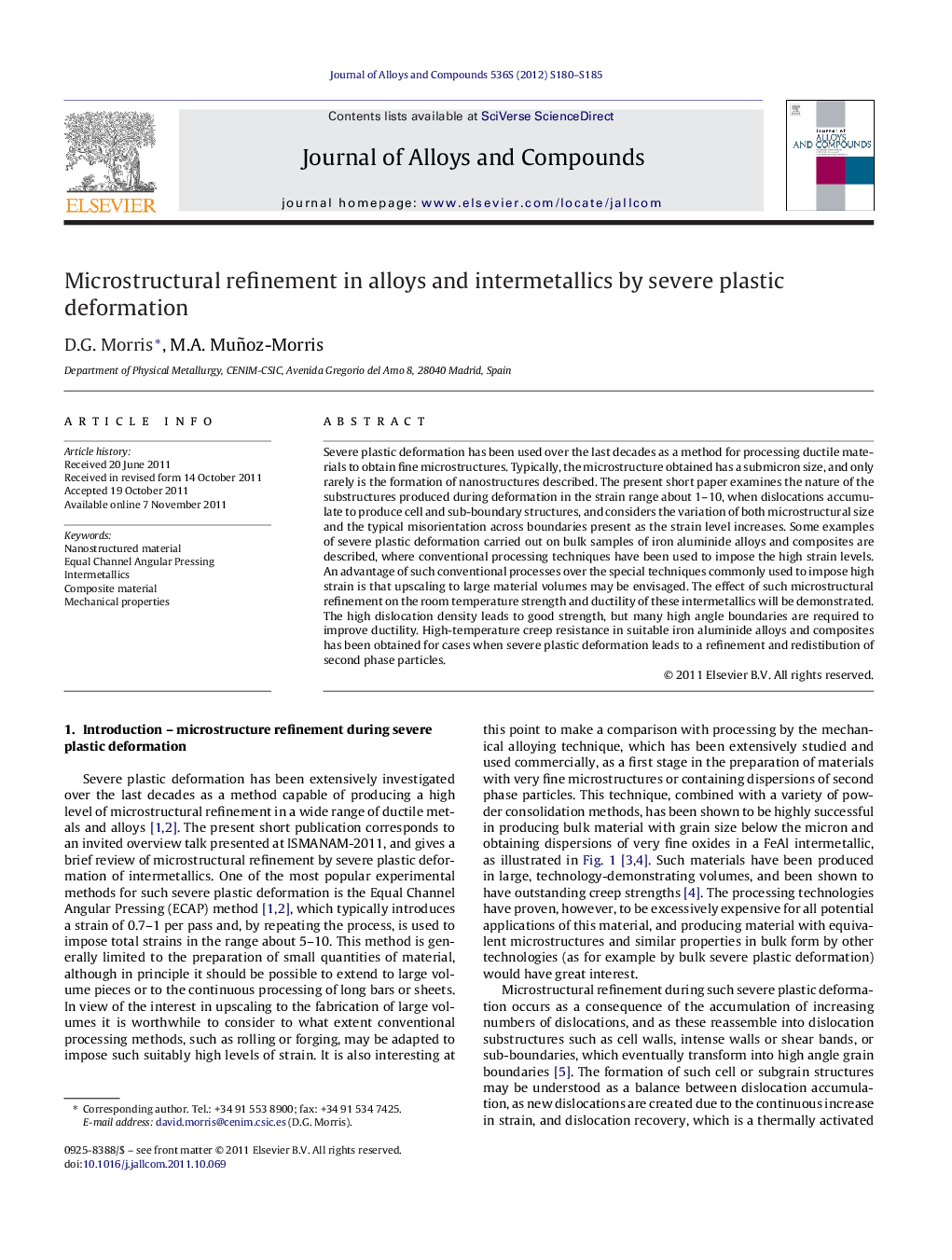| Article ID | Journal | Published Year | Pages | File Type |
|---|---|---|---|---|
| 1615905 | Journal of Alloys and Compounds | 2012 | 6 Pages |
Severe plastic deformation has been used over the last decades as a method for processing ductile materials to obtain fine microstructures. Typically, the microstructure obtained has a submicron size, and only rarely is the formation of nanostructures described. The present short paper examines the nature of the substructures produced during deformation in the strain range about 1–10, when dislocations accumulate to produce cell and sub-boundary structures, and considers the variation of both microstructural size and the typical misorientation across boundaries present as the strain level increases. Some examples of severe plastic deformation carried out on bulk samples of iron aluminide alloys and composites are described, where conventional processing techniques have been used to impose the high strain levels. An advantage of such conventional processes over the special techniques commonly used to impose high strain is that upscaling to large material volumes may be envisaged. The effect of such microstructural refinement on the room temperature strength and ductility of these intermetallics will be demonstrated. The high dislocation density leads to good strength, but many high angle boundaries are required to improve ductility. High-temperature creep resistance in suitable iron aluminide alloys and composites has been obtained for cases when severe plastic deformation leads to a refinement and redistibution of second phase particles.
► Severe plastic deformation produces submicron-scale, not nanoscale microstructures. ► Heavy conventional rolling and forging can introduce suitable severe deformation. ► Heavy rolling Fe3Al produces fine subgrains having good strength but poor ductility. ► Heavy forging Fe3Al can produce fine particle dispersions giving good creep strength.
